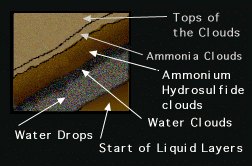This is a drawing of the transition from the atmosphere to the interior.
Click on image for full size
NASA
The Structure of Jupiter's Interior
There is no surface to the giant planets, only a gradual transition from the atmosphere, as depicted in this drawing. The hydrogen and helium of which Jupiter is mostly composed change to liquid form under the high pressure conditions found in the interior, but the change is very gradual. Therefore the giant planets do not have strict layers, as the terrestrial planets do.
The liquid portions of Jupiter form by far the largest sections of the planet, although the liquid layer is not composed of water. The first liquid layer inside Jupiter, immediately under the atmosphere, is the liquid hydrogen layer. Under the liquid hydrogen layer is a liquid metallic hydrogen layer.
At the deepest part of Jupiter is the core, which is probably the size of planet Earth.
You might also be interested in:
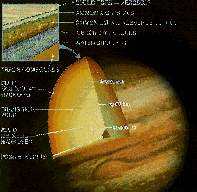
The Giant planets do not have the same layered structure that the terrestrial planets do. Their evolution was quite different than that of the terrestrial planets, and they have less solid material inside.
...more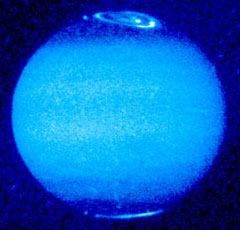
Several interesting phenomena are found at the poles of Jupiter, the largest planet in our Solar System. Three of Jupiter's four large "Galilean" moons are ice-covered and thus reminiscent of Earth's polar
...more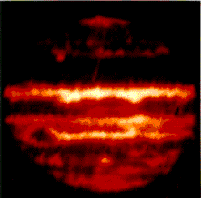
Frequently in astromony, the luminoscity of a star is calculated. The luminoscity indicates the energy, and the temperature of the star. When the luminoscity of the outer planets was calculated, that of
...more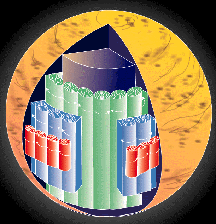
Motions, or currents in the interior of a gas-giant planet such as Saturn may be very different from the motions typical of the earth's interior. A second idea for the motions in the interior of a gas-giant
...more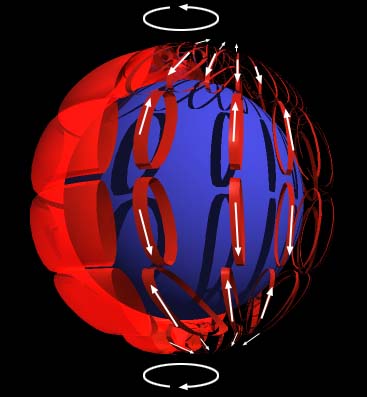
Motions in the interior of a planet help carry heat from the inside to the outside. The drawing to the left illustrates a kind of global motion that is typical of motions in the atmosphere as well as the
...more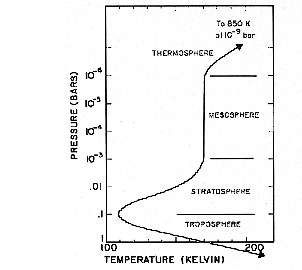
This is the temperature profile of Jupiter's entire atmosphere. The horizontal lines indicate the boundaries between the troposphere, the stratosphere, the mesosphere, and the thermosphere.
...more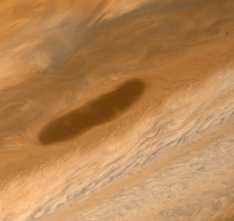
This is a picture of a brown barge. The accompanying clouds, next to the barge, look very similar to earth clouds.
...more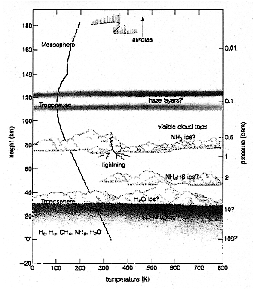
There are three regions in Jupiter's atmosphere, as shown in this picture, where clouds of a particular kind, or clouddecks, are to be found. There is a clouddeck of ammonia clouds, a clouddeck of ammonia
...more


